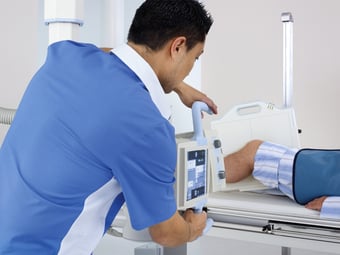If you’re like many imaging facilities, stress is still mounting to convert to a fully digital radiography solution, and it doesn’t seem like the industry has yet reached its tipping point.
It’s an age-old problem for imaging leaders to need to protect their department’s revenue stream, but it is especially relevant now that CMS is enforcing reimbursement penalties on analog X-rays and computed radiography. Although the prospect of upgrading to digital may not seem imperative while the penalties are still relatively low, the time will come when it is no longer feasible to wait. The benefits of standardization and the enhanced quality of digital imaging are good reasons to upgrade now.
 Perhaps you’re hearing from administration, finance or purchasing that standardization is a priority and that all systems should operate on the same platform to deliver a consistent outcome. At the same time, a budget-neutral transition to digital is important, even though you may have recently invested in a computed radiography system or fleet. Of course, newly purchased systems must be integrated seamlessly into your existing radiography department.
Perhaps you’re hearing from administration, finance or purchasing that standardization is a priority and that all systems should operate on the same platform to deliver a consistent outcome. At the same time, a budget-neutral transition to digital is important, even though you may have recently invested in a computed radiography system or fleet. Of course, newly purchased systems must be integrated seamlessly into your existing radiography department.
I continue to hear about these challenges from imaging providers of all sizes. Some good news is that many vendors have retrofits or trade-in incentives for facilities who still need to upgrade or replace their non-digital X-ray systems. Don’t be afraid to rely on your vendor for help in determining the best solution to meet your clinical and financial needs.
For example, consider asking your vendor about performing workflow and/or standardization analyses as part of the upgrade or replacement process. Administration is not wrong about the importance of standardization. It’s not just about going digital to meet the requirement by CMS; it’s essential that you look at the entire workflow process to pinpoint inefficiencies and direct resources where they are needed most.
If you’re a small center or critical access hospital, standardizing your equipment around digital can produce operational gains such as more productive workflow, cross training staff, improved technologist satisfaction and more.
If you’re part of a multi-hospital network or system, standardizing your entire fleet of radiography equipment can yield significant time and cost savings, not only in acquisition cost by signing a multi-system quote, but also in terms of OEM or in-house maintenance over the life of the equipment. You also can reduce the headaches associated with multiple contracts to manage, future upgrades or spare part purchases.
If you need help, Cassling and Siemens can analyze your existing radiographic portfolio and develop a plan to help you standardize your fleet, taking your budget, staff, service needs and existing systems into consideration. We know that going “all-in” on digital and the process of standardizing are significant challenges, so we’ll work with you to develop a customized short- and long-term plan.
I’d love to hear about your pain points and questions related to X-ray conversion and/or standardization in the comments below.
Interested in a noninvasive retrofit solution to digitize and standardize your detector fleet? Check out a simple retrofit solution.




Comments